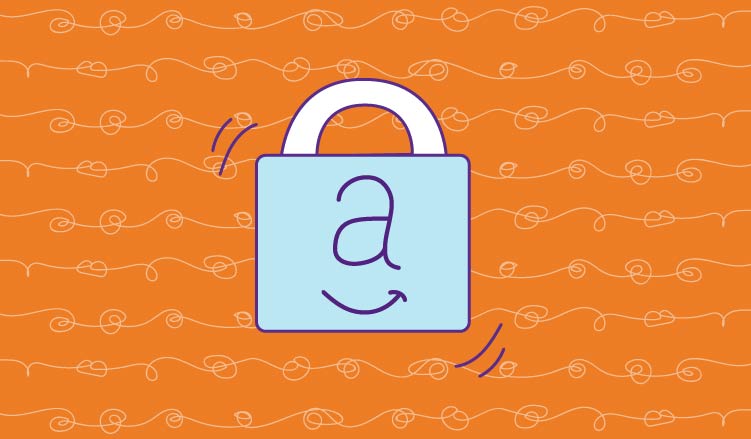How to Build and Grow your Private Label Business on Amazon

Keep the good stuff coming
Subscribe to our blog newsletter and get monthly content that helps you manage product data smarter.
No spam. Just real value.
$26.6 million.
That’s an approximate amount of money Amazon has made during the past hour.
On average, its income per second is $7,300.
Aren’t you surprised to see such numbers? But who am I kidding? This isn’t a mind-blowing fact at all. These are already widespread stats about the world’s largest online retailer.
We all know that if Amazon were a celebrity, it would be the most famous celebrity in the world. How does it make itself so recognizable and, more importantly, profitable? What if I told you that there are no gimmicks here, and Amazon is simply using the private labeling strategy quite successfully to boost sales? Can you guess how many private labels it has got already?
Definitely less than 10,000. But more than 100.
A little-known fact about Amazon is that it owns over 400 exclusive and private label brands.
But let’s not talk (much) about Amazon’s income or that the brand has grown into an e-commerce behemoth with 5.2 billion visitors per month and that over 1.7 million small- and medium-sized businesses sell in its stores, and blah-blah-blah. Instead, we’ll discuss how your business may benefit from branding and labeling your products on Amazon. For example, how to get a head start and promote considerable growth in your private label sales.
Why bother with private label products
Let's remind you what privately labeled products are and whether the private labeling strategy is indeed high-performing and efficient. Just to refresh: a retailer buys products from a supplier/manufacturer, creates a unique brand, and sells these items under your logo and name. That’s how private label products appear on the market. Everything is as simple as 1-2-3:
Buy items or goods → create a private label → sell your products under your brand name.
But is this beneficial?
Conquering Amazon’s space isn’t a piece of cake. That’s true.
But branding your products gives you a push forward with the following benefits:
- A high-profit margin: unbranded items tend to sell at comparatively lower prices. You may boost profit margins with an optimal repricing approach, for example
- Higher credibility to your products: a trustworthy brand builds customer loyalty. Brand awareness and brand trust go hand in hand here
- Better identification: your clients are more likely to remember who you are if you make your business more visible with a private label
- More customizable selling solutions: you may personalize your brand as much as you want and customize a product to achieve a better functioning Amazon business
Now that you’ve grasped the advantages, let’s move on and get down to business. Let’s find out how to start your private label business, promote its development and win the competition.
Tips for an effective Amazon private label creation
Follow these proven tips on how to make a good start in your Amazon private label business:
1. Choose a profitable product
Start with ideation:
Brainstorming ideas always helps. What are you going to sell? Enumerate at least ten products for each category in the chosen niche. But keep in mind that you might have to deal with trademarks, copyrights, and patents. It’s better to be prepared and know the legal background.
Finished brainstorming? That’s enough for now. You will have to do some math as well. Math and analysis. Yeah, you can’t do without it if you aim at finding a good product-market fit.
Research the market and do competitor analysis:
Discover how Amazon’s ranking algorithm works and do some research to identify the trending products. Where to check:
- “Best Seller”
- “New Releases”
- “Movers & Shakers”
Shoes, clothing, and jewelry took the largest share of the private label products owned by Amazon (over 47%). Remarkably, electronic goods accounted for 58% of Amazon’s private label sales. The growth was also notable in such categories as diapers, paper products, and vitamins.
So what products should you sell? Those that cover unmet market needs. For instance, Buttoned Down, one of Amazon’s private labels, gives its customers 72 sizes of dress shirts.
Pretty impressive, isn’t it?
2. Make a deal with the proper manufacturer or supplier
A proper manufacturer.
How do you know a person is a proper and reliable supplier or manufacturer?
They all will tell you things like: “I’m the best” or “You won’t find anything cheaper.”
Here’s what to look for:
- Recommendations and feedback
- Experience in manufacturing and supply management
- Possibility of quality control (check product samples)
- Clear and definite terms and conditions of cooperation
“Negotiate and bargain hard with your supplier. Not harsh, but with severe persistence. Just don’t be shy. But mind, you both need to find a win-win solution,” recommends Roy Morejon, President & Co-Founder of EnventysPartners. “You also need to determine the most adequate quality-price ratio,” he adds. Well, ok, let’s suppose you’re not shy and know how to negotiate.
You’ve made a good deal. What now?
3. Create a “wow” brand
Have you ever wondered why some brands win more target audiences than others? That’s because of the “wow” brand they managed to launch on Amazon working properly on their:
- Brand name and story
- Logo and design
- Packaging
Create an interesting name, but don’t go too far. Tell your honest story, and don’t underestimate shape and color psychology in design. For example, red and yellow stimulate appetite. Also, take care of adequate packaging. It impacts the first impression your clients get.
4. Make a “wow” listing
Your listing should produce a “wow” effect too. Don’t forget about Amazon product information management and the tricks it can offer to ensure an interactive product catalog.
More than 80% of the total sales on Amazon take place on Page 1. Optimize your product listing, make it channel-specific and automate content sharing to all sales channels.
5. Pick the best Amazon fulfillment method
You’ve got these three:
Fulfillment by Amazon (FBA), Seller Fulfilled Prime (SFP), and Fulfillment by Merchant (FBM). Don’t hurry to pick the first one, even though it’s the most commonly used variant. Consider the pros and cons of Amazon’s FBA model and then compare it with other methods.
6. Boost your products’ potential with Amazon SEO
One of the foremost things to do is research keywords and optimize your product names on Amazon. Additionally, use some extra SEO tools to analyze and measure your success. A couple more to try:
- Helium 10
- Sonar
- Keyword Inspector
- Scientific Seller
- Feedback Genius
- Sales Backer
Aaron Gray, the Managing Partner of NO-BS, suggests that "a good private label seller should combine the best Amazon SEO & PPC strategies. Amazon SEO helps your items rank higher in the search results. With Amazon pay-per-click, you get your product ads listed in your chosen placement." So, now you’re ready to build a strong Amazon campaign and make the best use of your constructive private labeling strategy. You might still need more recommendations on how to maintain your business development and growth once you’ve built a brand.
How to get the most from private label selling – extra hacks
Grab these must-do hacks to expand your business perspectives and multiply sales:
1. Go multi-channel
Consider the best e-commerce platforms that are “on good terms” with Amazon.
2. Use powerful promotional strategies
Amazon sellers often don’t give due importance to some winning marketing strategies.
Here’s what you might want to do to promote your brand on Amazon:
- Keep your business social on Amazon and outside it (Instagram, TikTok, Reddit, Facebook, etc.)
- Look for partnerships
- Cooperate with influencers
- Use paid ads
- Encourage clients to write reviews
Note: 79% of shoppers always read reviews before purchasing a product.
You may do everything by yourself or, instead, outsource the promotion of your brand to a reliable agency. Due to the increasing competition and high demand for online advertising, the companies that provide Amazon marketing services are appearing like mushrooms after heavy rain. As an alternative, get an in-house Amazon marketing expert to do the job for you.
3. Take advantage of the best-seller’s tools
“It’s not enough just to sit and wait for Amazon shoppers to stop by and choose your product. Make the most of the tools and software for Amazon sellers, starting with product catalogs and inventory management,” says Chelsea Cohen, Co-Founder of SoStocked. Start with these two:
- Branded PDFs – a tool for product sheets that close deals
- Brand Portals – a product catalog software to customize your brand portal
4. Test the market and re-check your product-market fit regularly
One of the ways to see how people react to your product is to showcase it on social media.
You may also collect client feedback from reviews, emails, DMs, or surveys.
Armed with hands-on tips and even more! What to do next?
With Amazon private labeling, you can emphasize your uniqueness, become more recognizable and adaptable and, mostly, make a considerable profit. In this article, you’ve got some useful tips and hacks on how to build your private label business on Amazon and grow it successfully. Such a strategy can help you increase Amazon sales and achieve revenue optimization.
Do you have what it takes to optimize your business processes on Amazon? Whatever stage you’re at, Plytix is your best bet to try multi-channel commerce and bring your product listings to the next level. So, if this is what you’re looking for, book a demo and gain more insights on how the best product optimization provider can help you win Amazon customers over.

Catherine Schwartz
Catherine is a marketing & e-commerce specialist who helps brands grow their revenue and move their businesses to new levels.

What if your product data actually worked for you?
We’ll show you how Plytix helps you stop fixing data—and start using it.
Related posts
Keep the good stuff coming
Subscribe to our blog newsletter and get monthly content that helps you manage product data smarter.
No spam. Just real value.




Think others should see this?
Go ahead and share it.